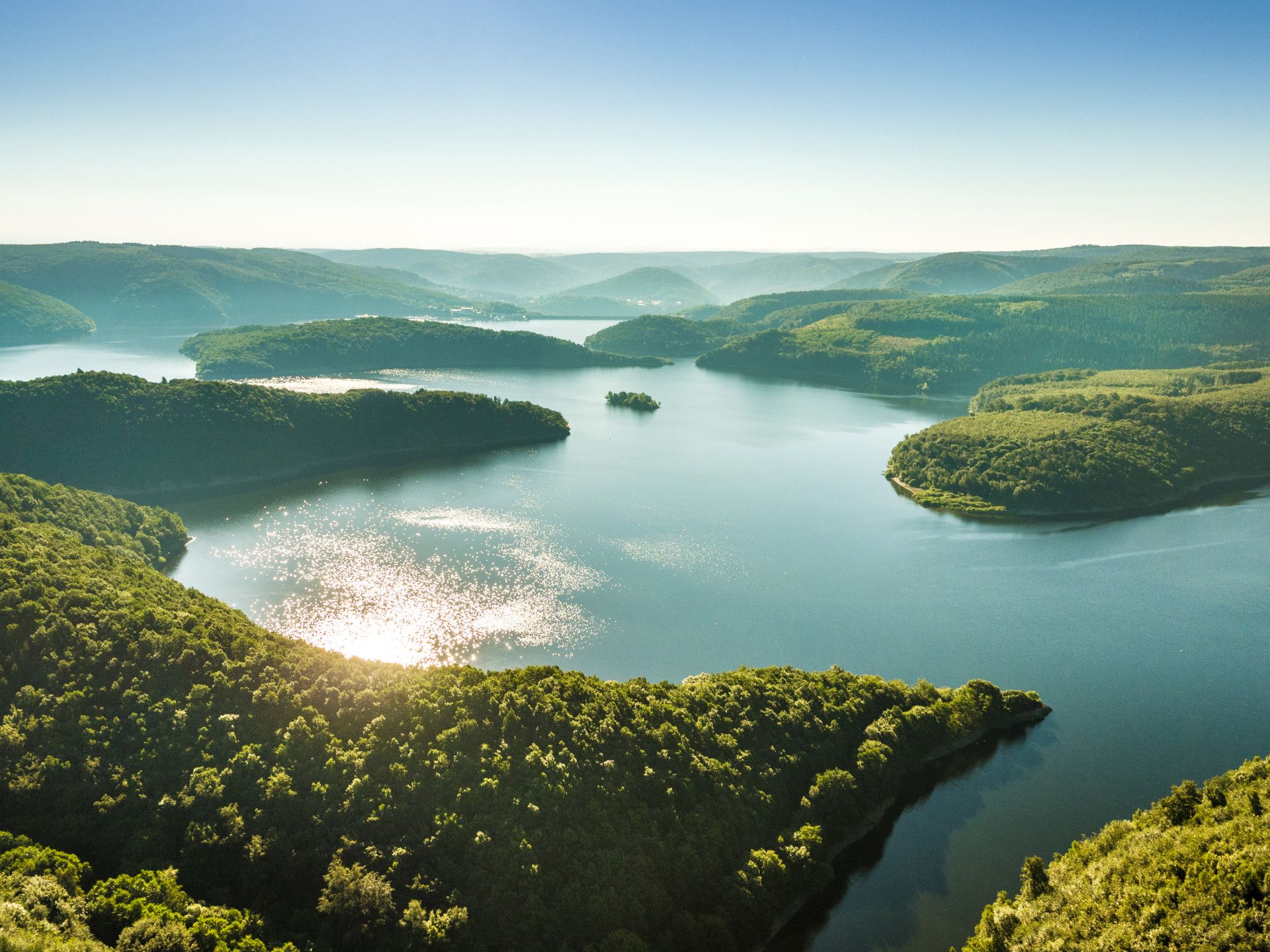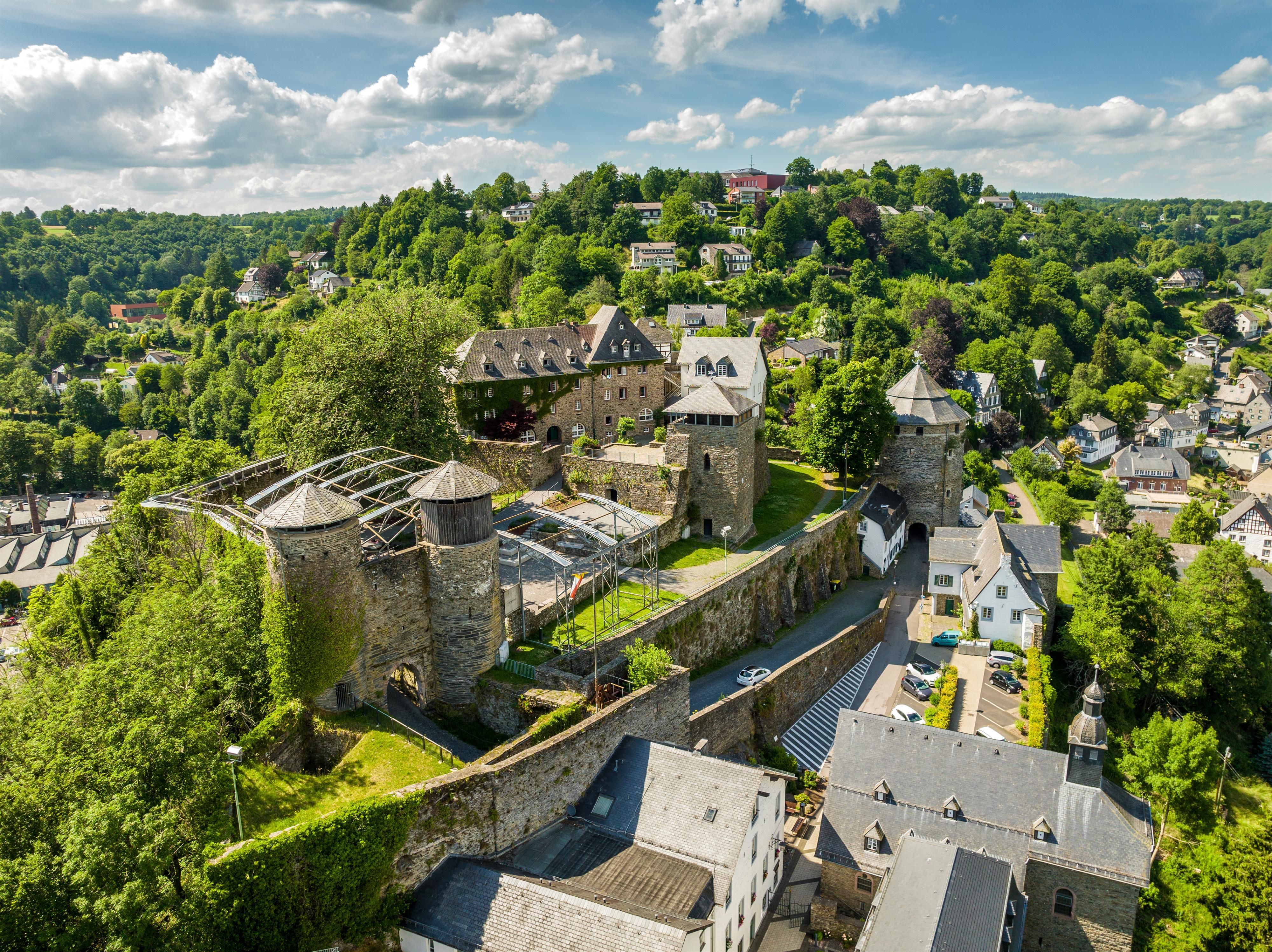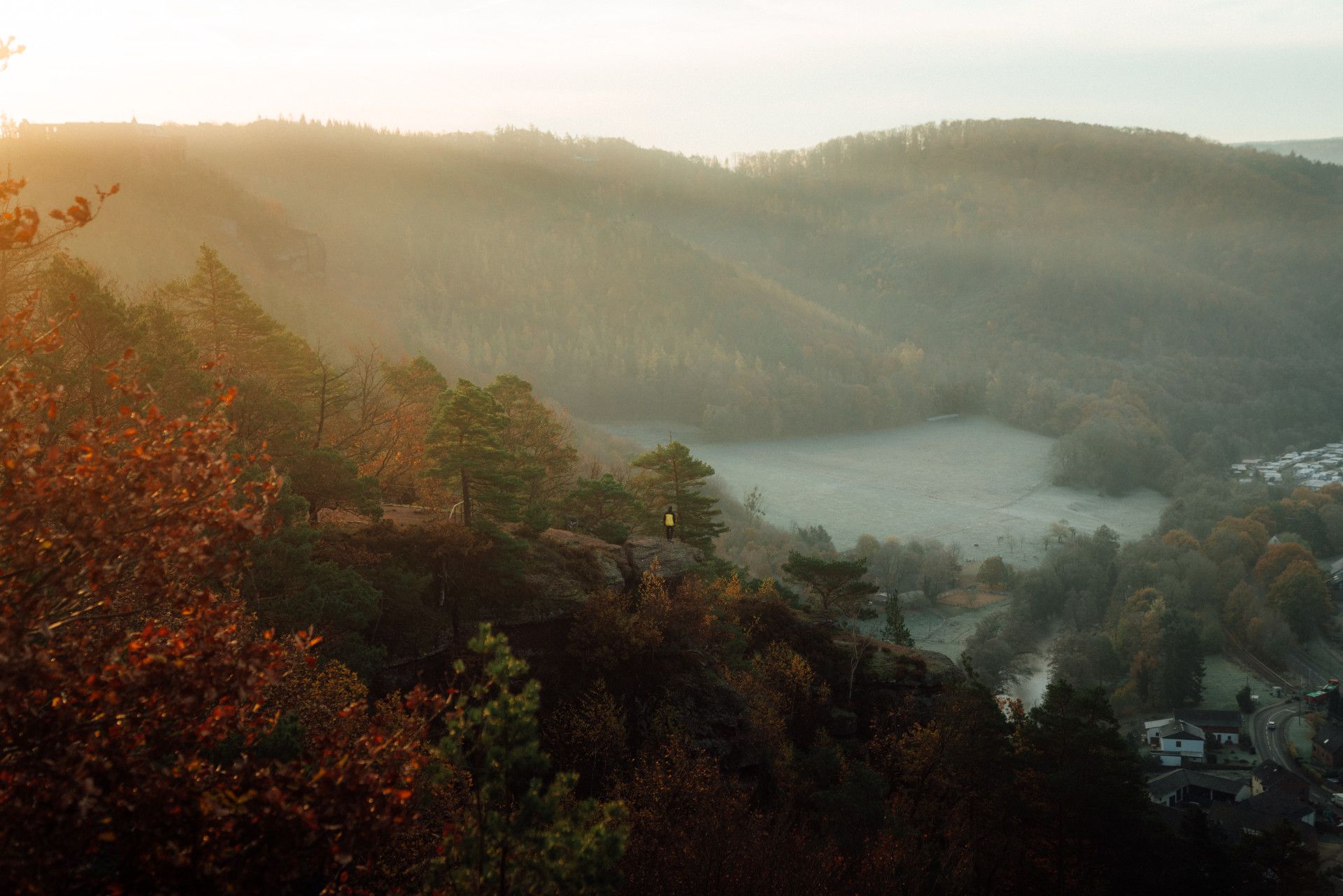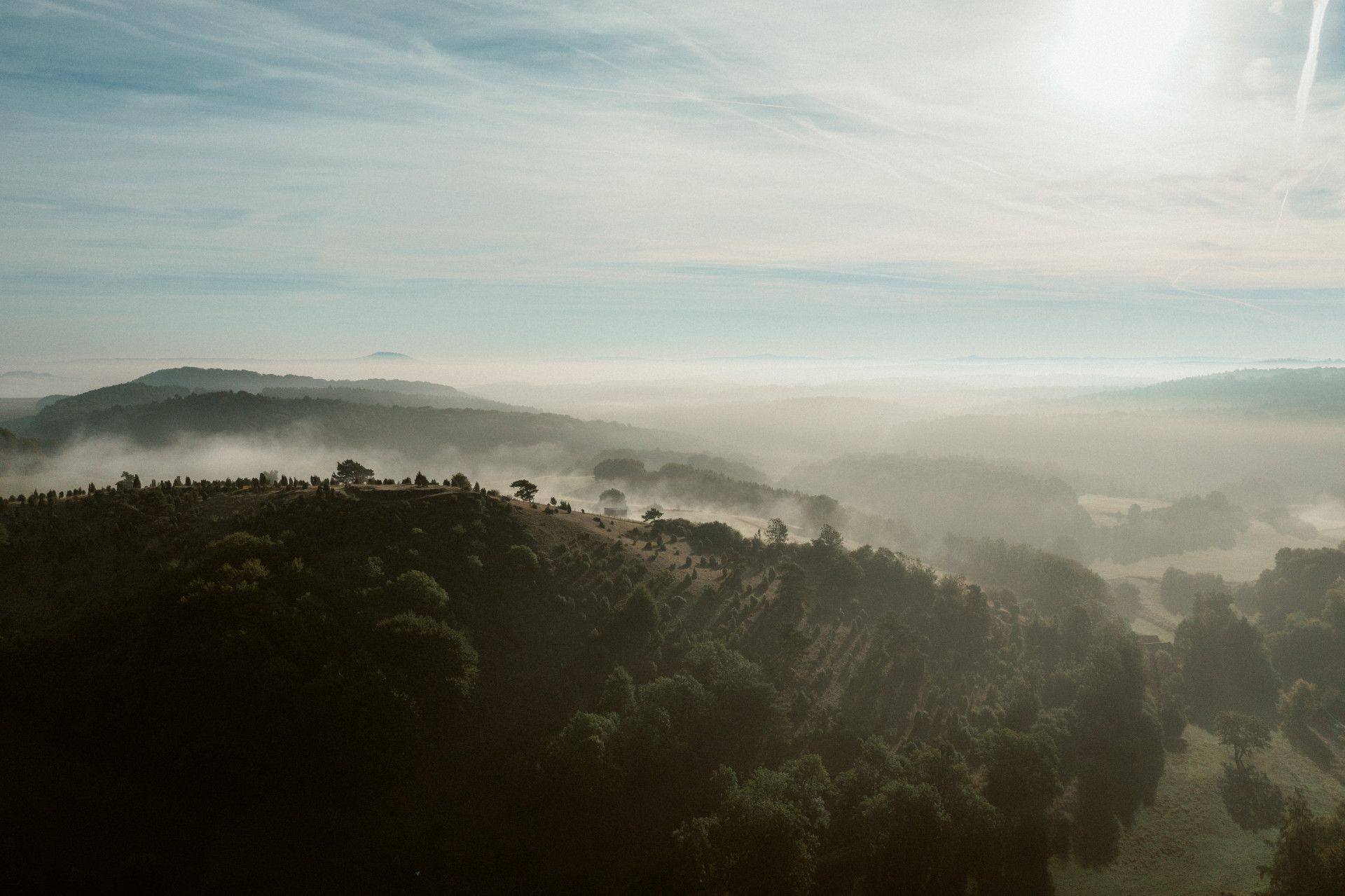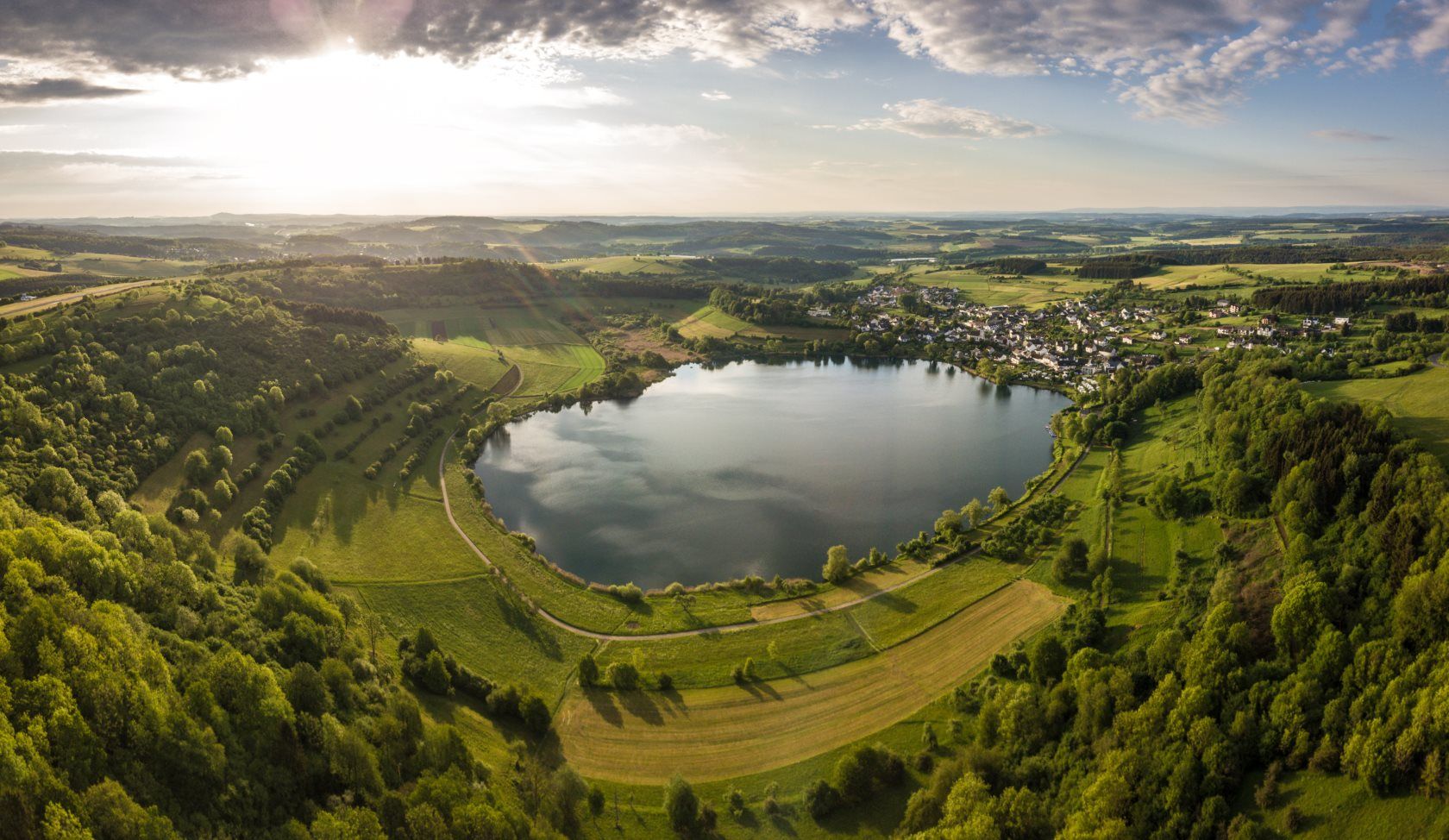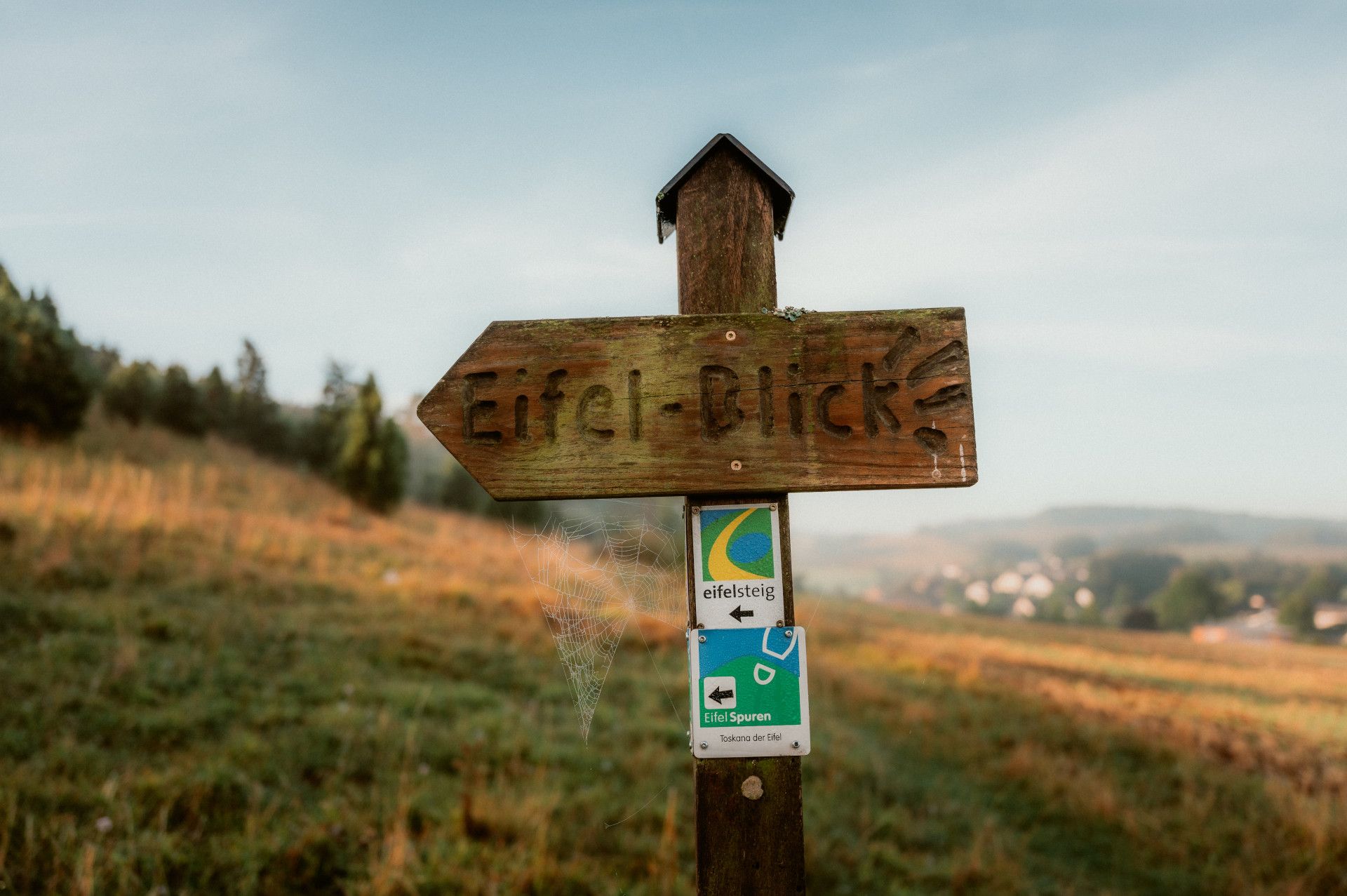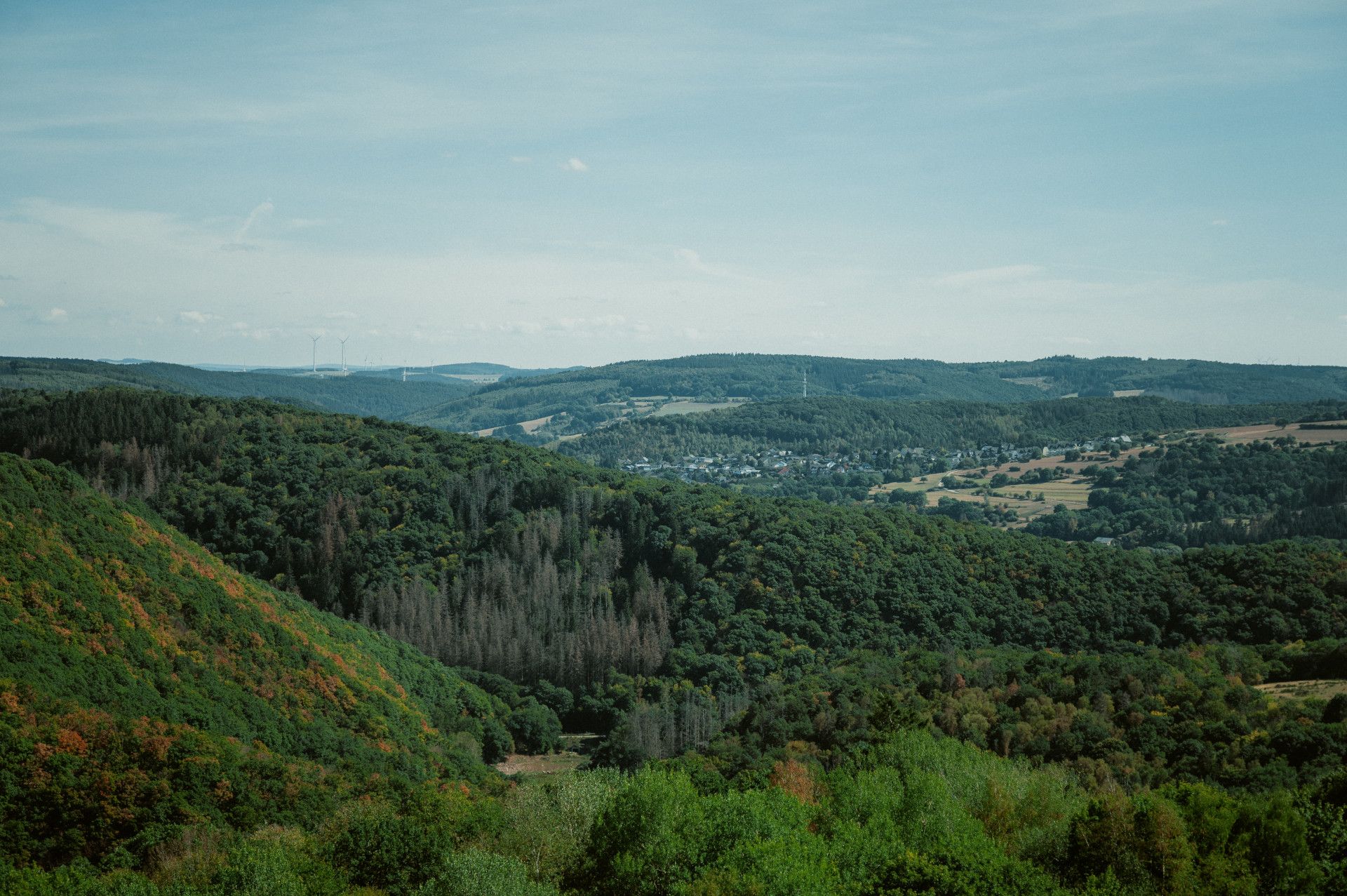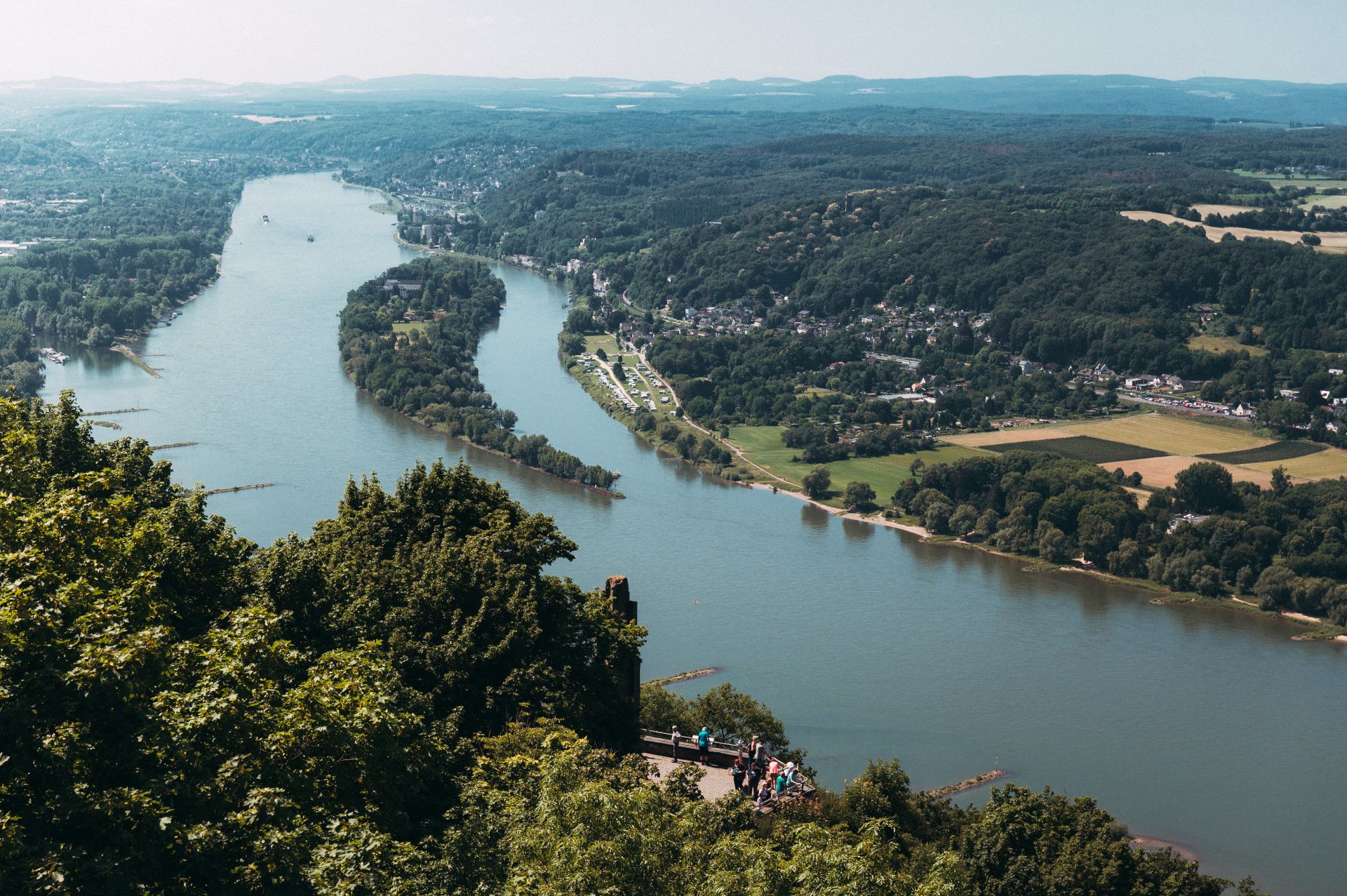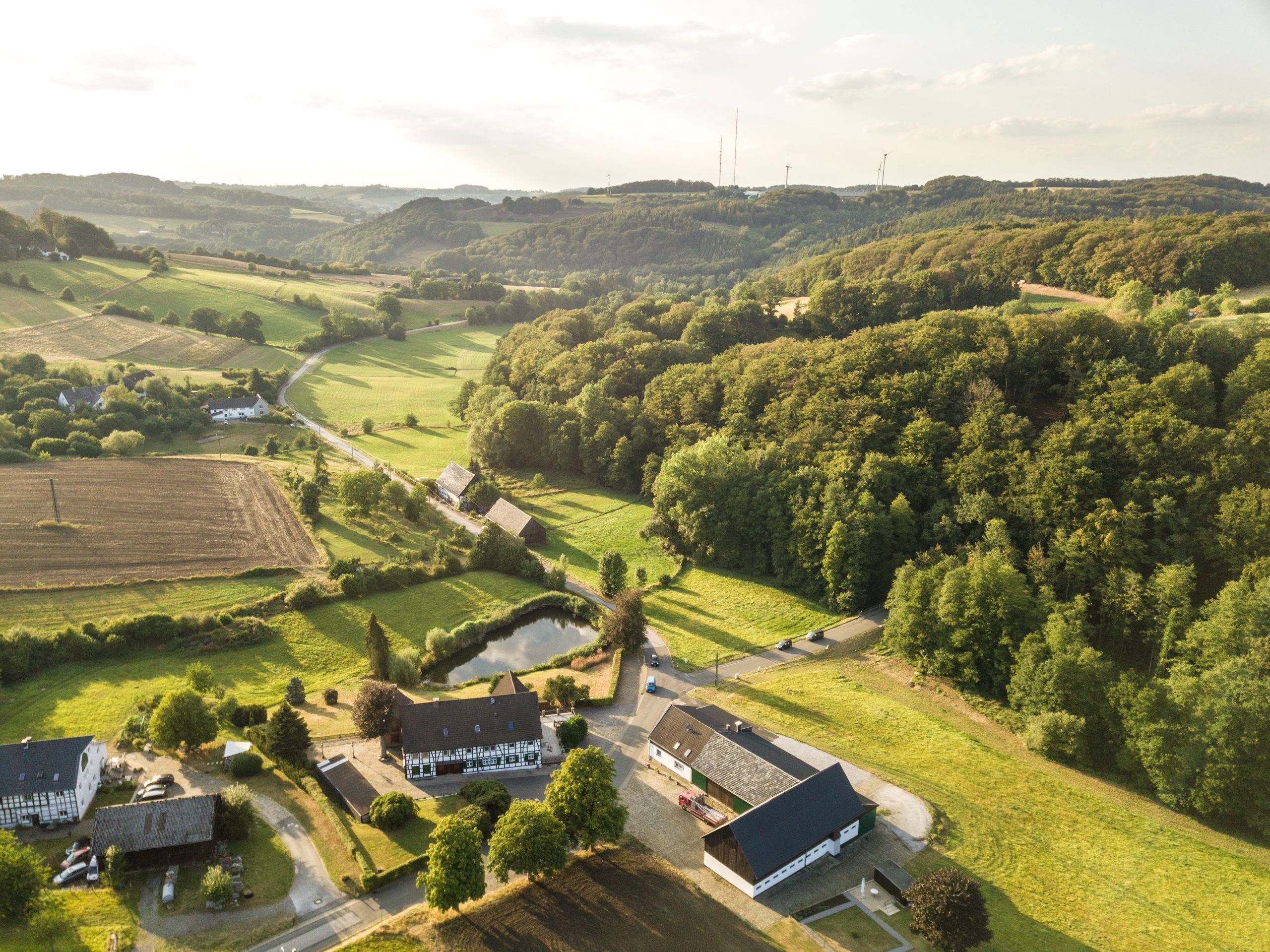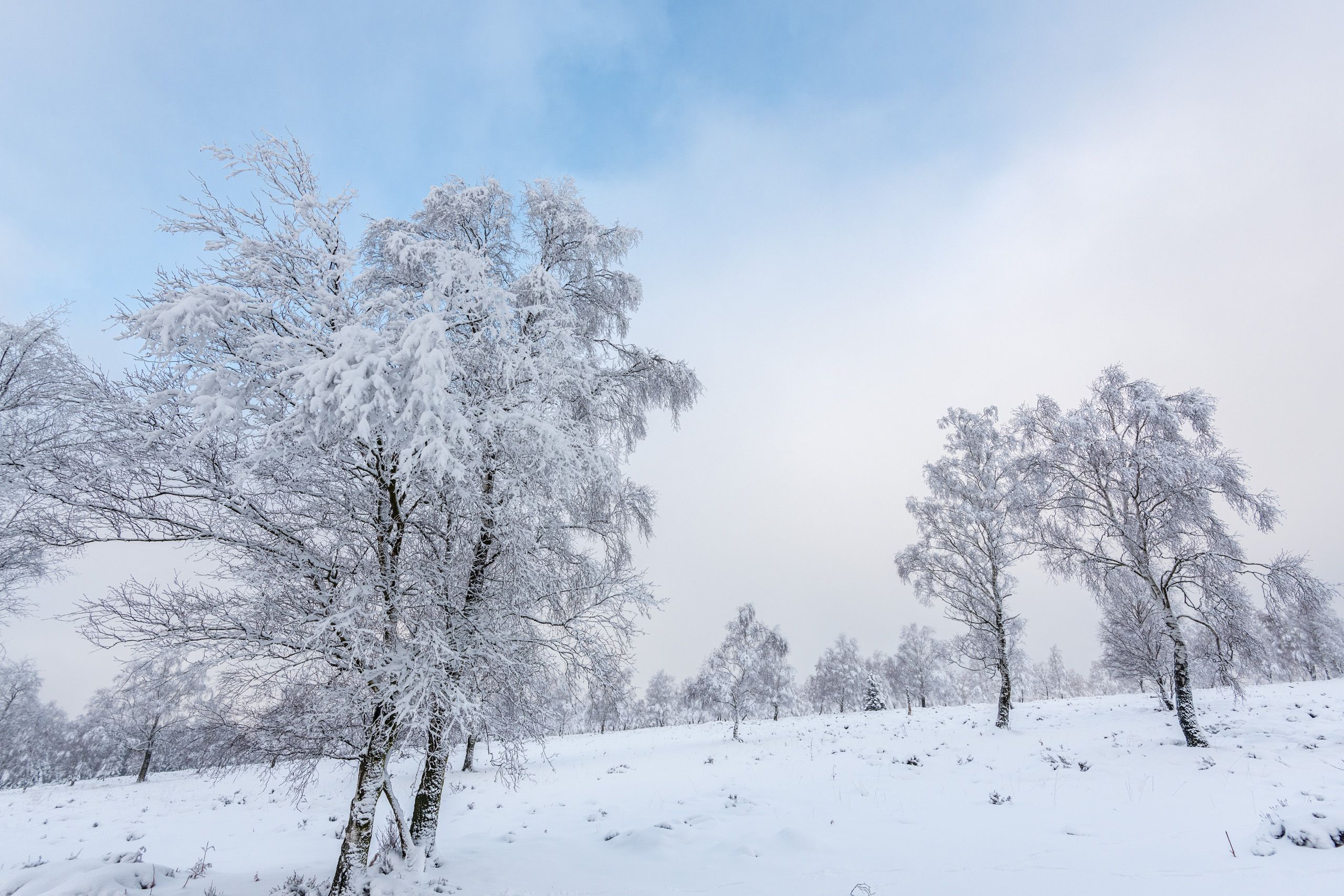This blue! Simply stunning. When the sun is reflected in the water of Lake Urft, you would think it shines even brighter than anywhere else. The reservoir is so idyllically nestled in the middle of the lush green, densely overgrown "primeval beech forests" of the national park. It is the oldest reservoir in the Eifel. The impressive dam wall, built 120 years ago from quarry stone, was one of the largest structures in Europe at the time. The Eifelsteig trail leads past the rugged rocky banks up to the National Park Center above Schleiden. From there, you can enjoy the most beautiful view of the Urft and adjacent Obersee lakes and the unique landscape panorama.
Battle of the elements
The 15 easy but sometimes challenging stages between the two historic cities of Aachen and Trier offer impressive views of the landscape shaped by the millennia-old battle of the elements. For example, from the Dreiborn plateau, which shines in the bright yellow of the broom in early summer, or from the Calvary near Blankenheim. The largest juniper area in North Rhine-Westphalia surrounding it exudes an almost Mediterranean flair. In the fall, the pipe grass on the plateau of the High Fens, one of the largest intact raised bogs in Europe, shimmers a rusty red. A sight like this, made up of gnarled bog birch trees, groups of bushes and willows, sprawling rowan trees and the occasional spruce, is otherwise only found further north.
The natural silence of the forest
Back in the woods, nothing disturbs the natural tranquillity. Here and there there is a rustle in the thicket. Perhaps a wild cat? The leaves crackle and crackle. And somewhere on a stone, a wall lizard is enjoying the warm rays of sunshine as it makes its way through the high treetops. In total, more than 11,200 species of animals, fungi and plants feel at home again in the pristine nature of this "primeval forest of tomorrow". In the fall, you might even be able to hear the deer roaring as they come here to mate. Before you reach the end of the trail along the rugged dolomite cliffs near Gerolstein, you might hear a gentle bubbling. The deep blue maars of the Volcanic Eifel, also known as the "Eyes of the Eifel", are still bubbling underground.
